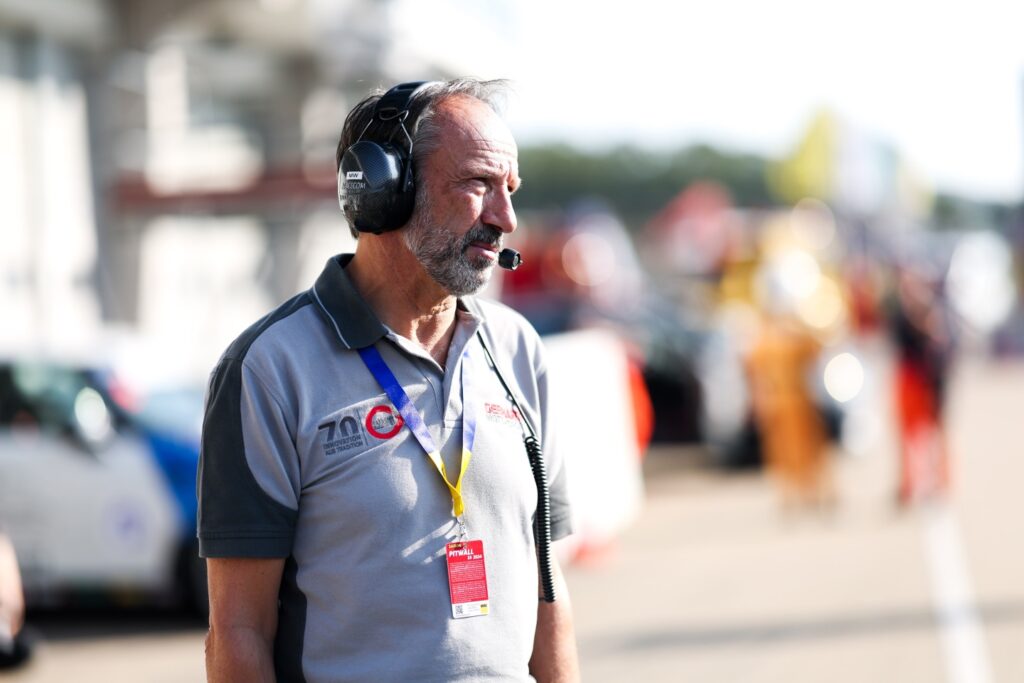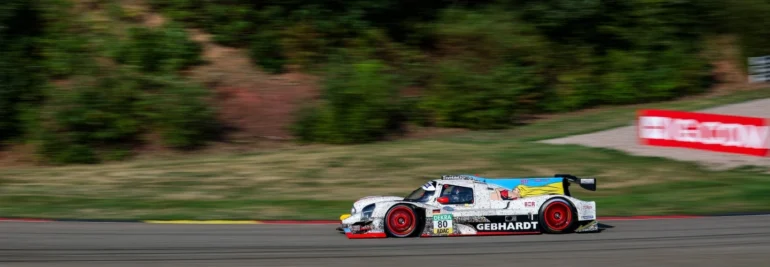The three-time Le Mans winner Marco Werner is a major supporter of young Belgian driver Maxim Dirickx, who made his debut in the Prototype Cup Germany last year. According to Werner, the LMP3 series is the ideal choice, especially for up-and-coming racers.
Marco Werner is considered one of the most successful German sports car drivers, and he was frequently seen at the races of the Prototype Cup Germany last season. This involvement wasn’t coincidental, as he is now helping Maxim Dirickx build his racing career. “I’ve known Maxim’s mother for a long time, as she, like me, is an instructor for the Audi Driving Experience. When Maxim decided to transition from karting to motorsport, she reached out to me for advice,” Werner explains his connection to the Dirickx family. “The advice I gave them was simple. Formula racing is practically non-existent in Germany these days, and internationally, it’s nearly impossible to finance. In touring car racing, there are fewer and fewer factory-backed seats. It’s similar in the GT world. But LMP racing is booming. Many factory teams are involved, and that creates opportunities for young talents to prove themselves and secure a spot. I believe prototype racing is the best option right now, especially since the budget is manageable, and you can share the car with another driver. Plus, for the money, you get a genuine race car; the cost-to-fun ratio is excellent. This is, in my opinion, one of the reasons why the Prototype Cup Germany is an attractive choice for bronze drivers.”
Another aspect is the learning curve. “With LMP3 cars, which are essentially Formula-style cars with a roof, there’s so much to learn. Even small adjustments to the setup can make a big difference. As a driver, you quickly realize the importance of paying attention to even the smallest details. And you also learn how to work with the data. With all the numbers and curves the car records during each session, you can improve much faster than we could in my early days when data logging was still in its infancy. But it’s not just about having the data—it’s about being able to interpret it and draw the right conclusions for yourself. You also learn how to work with engineers and understand the full workflow of a race weekend. These are all aspects that a factory driver needs to master. And with this knowledge, you can truly shine when given the chance to test with a factory team. In my opinion, an LMP3 car is an excellent way to prepare for bigger challenges.”
Marco Werner speaks from experience. In the late 1980s and early 1990s, he went through the Formula school and achieved some notable successes. In 1992, he won the prestigious Formula 3 race in Monaco and finished second in the highly competitive German Formula 3 Championship both in 1991 and 1992. Werner went on to achieve even greater success in prototype racing, winning the 24 Hours of Le Mans three times, the 12 Hours of Sebring three times, and the 24 Hours of Daytona once. This makes him one of only seven drivers worldwide to have won all three of the major endurance racing classics. He was also a three-time champion in the American Le Mans Series (ALMS) with different co-drivers. Werner, now 58, has a deep understanding of the skills required to be a fast prototype driver and is passing that knowledge on to his protégé Maxim Dirickx. Last year, the 20-year-old, who only started karting at 16, narrowly missed his first podium in Zandvoort, finishing fourth alongside his teammate Jacob Erlbacher.

In this text, Marco Werner clearly lays out his belief that the LMP3 series is the most practical and rewarding option for young drivers looking to make their mark in motorsport. With limited opportunities in Formula racing and the challenges of securing factory-backed seats in touring cars and GT racing, LMP3 offers a unique and more accessible path for rising talents. Not only does it offer a chance to drive high-performance race cars, but it also provides crucial learning experiences through data analysis, engineering collaboration, and race weekend preparation.
What makes Werner’s perspective particularly valuable is his vast experience. His success in Formula racing and then in endurance racing, including some of the most prestigious races in the world, gives him an expert’s understanding of what it takes to succeed at the top level. The path he recommends for young drivers—starting in LMP3—is grounded in his own journey, where he first built his skills in the highly competitive world of Formula 3 and then transitioned into prototypes, where he achieved legendary status.
One of the key takeaways from Werner’s words is the value of the LMP3 series in terms of cost-to-benefit ratio. The opportunity to drive a top-tier race car without the immense costs typically associated with higher categories of motorsport makes it a more feasible stepping stone for young drivers. It’s also worth noting that the chance to share a car with another driver helps to spread the financial burden, making it more accessible for talented but less wealthy individuals.
The importance of learning the technical side of the sport is another crucial element Werner touches on. As cars and racing technology evolve, understanding data and setup is becoming increasingly essential. In this sense, LMP3 is more than just a stepping stone—it’s a serious training ground for future factory drivers, where attention to detail, quick learning, and teamwork are as critical as raw speed.
Werner’s mentorship of Maxim Dirickx highlights the importance of nurturing young talent, particularly in an era where the financial demands of motorsport can be overwhelming. By guiding Dirickx through the early stages of his career, Werner is helping to ensure that the next generation of drivers has the skills and experience needed to compete at the highest level. If more experienced drivers like Werner continue to offer their expertise, the future of motorsport could see an influx of well-prepared, highly skilled drivers making their mark on the global stage.

